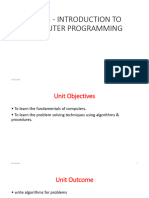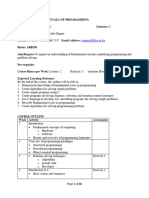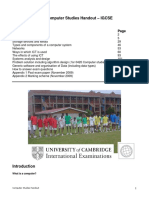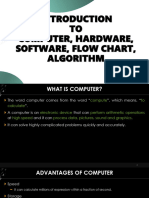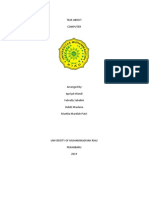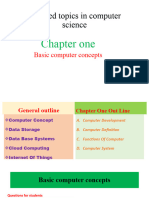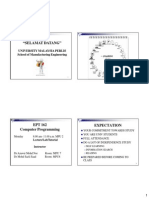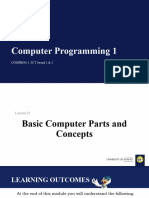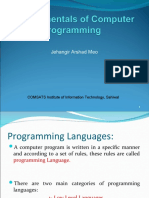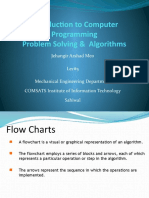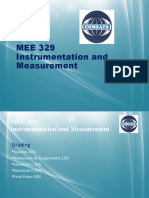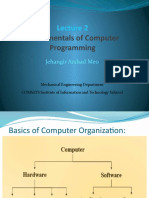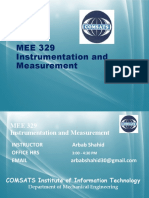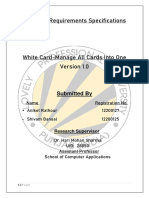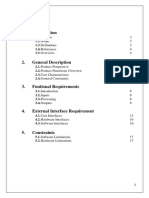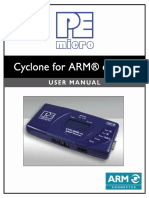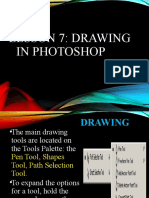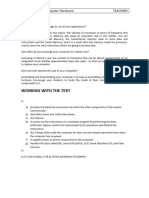0% found this document useful (0 votes)
93 views16 pagesFundamentals of Computer Programmin: Jehangir Arshad Meo
This document outlines the syllabus for a lecture on fundamentals of computer programming. The lecture will cover basics of computer organization, components, software vs hardware, data types, control structures, arrays, functions, and pointers. Students will be graded based on quizzes, assignments, two sessionals, and a final exam.
Uploaded by
Alpha RomeoCopyright
© © All Rights Reserved
We take content rights seriously. If you suspect this is your content, claim it here.
Available Formats
Download as PPTX, PDF, TXT or read online on Scribd
0% found this document useful (0 votes)
93 views16 pagesFundamentals of Computer Programmin: Jehangir Arshad Meo
This document outlines the syllabus for a lecture on fundamentals of computer programming. The lecture will cover basics of computer organization, components, software vs hardware, data types, control structures, arrays, functions, and pointers. Students will be graded based on quizzes, assignments, two sessionals, and a final exam.
Uploaded by
Alpha RomeoCopyright
© © All Rights Reserved
We take content rights seriously. If you suspect this is your content, claim it here.
Available Formats
Download as PPTX, PDF, TXT or read online on Scribd
/ 16



